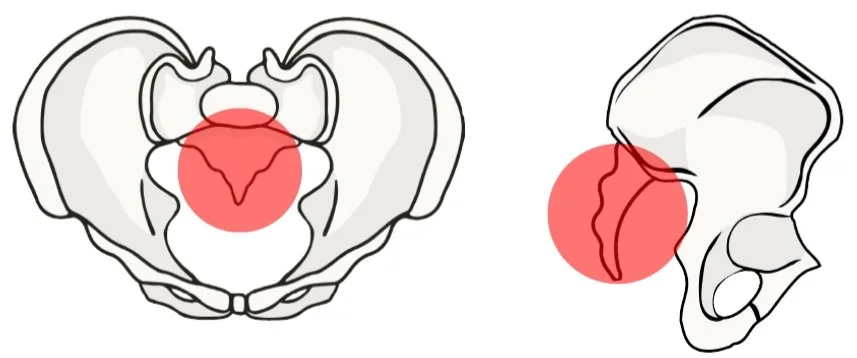Tailbone Pain
Tailbone pain (coccydynia) can be quite uncomfortable and be very disruptive to your day. If you have tailbone pain, you need to come see us ASAP. Unfortunately, there is no effective rehab from home for this. PT’s who do not have special training in the pelvis will often not be able to offer quick or lasting relief. This particular pain is often caused by the tailbone getting stuck in the wrong position. This can happen from external trauma, such as a fall directly on your butt. It can also come from an internal trauma, such as a difficult pregnancy and/or vaginal childbirth. Often an injury sustained to the coccyx during childbirth is the result of either the baby being in a less than optimal position (head or body being stuck in a weird position during birth) OR the coccyx was in a non-neutral position to begin with and a baby coming through the vaginal canal exacerbated this positioning. It takes a special skill set to help the bone return to its pain-free “home”. Done well, it is typically a 1-2 visit fix if we are dealing with this problem in isolation. Generally speaking, the tailbone can move into 3 different directions. Assessing what direction to fix is the key to successful treatment. Due to its location in the body and the skill it takes to diagnose the positional dysfunction; it is very difficult to do yourself.
Tailbone pain is common (but not normal!) after childbirth due to the trauma to the pelvic outlet that occurs during labor and delivery. Common complaints are pain with sitting (particularly prolonged sitting) as well as transitional movements such as going from sit to stand. Hard chairs usually hurt to sit on. Pooping and sex can also be painful. Tailbone pain/dysfunction can also contribute to other pains such as SI (sacroiliac) pain, pubic symphysis and hip pain.
Here are some tips to help make it more comfortable, until you come in for your pelvic PT appointment.
Lean forward slightly while sitting
Sit on a doughnut shaped pillow (this one is great because it is cut-out around the tailbone area!)
Deep inhalation into your pelvic bowl
Learn how to relax your pelvic floor (think about “dropping” it vs. kegel/contraction)
Massage the sides of the coccyx (gently!)
Release ligaments on either side of coccyx (gently massage area between ischial tuberosity (“sit bones”) and tailbone
Foam roll your glutes
Self external mobilization: Forward flex your spine, hook your finger on the outside of your tailbone, inhale, bulge your pelvic floor, sit up and pull your finger straight up to the ceiling
Other exercises: Pelvic Clock, Sidelying external pelvic floor releasel, Gluteus Maxmimus Foam Rolling and Stretch
Check out the video for more tips! (https://youtu.be/Oe4hvUsb9uQ)
What does that PT appointment look like?
Most of the mobilizations can be done externally, that is typically how treatment the first day will begin. Your PT will do a brief exam to figure out in which direction the coccyx is out of place and then use mobilization to help it back into a pain-free position.
If your tailbone is stuck in a severely flexed position, it is hard to reach the tip of it as it is now deep in your pelvis. For this reason, these people will sometimes require an internal treatment to adequately address the issue. This internal treatment is most often performed rectally.
The therapist will insert one finger intra-rectally and a second finger will be palpating from the outside. They gently pull on the tailbone to gap it from your sacrum and then put it back in place. Before that, the therapist will likely loosen the ligaments that connect to the tailbone through massage and movement to increase the likelihood of success.

